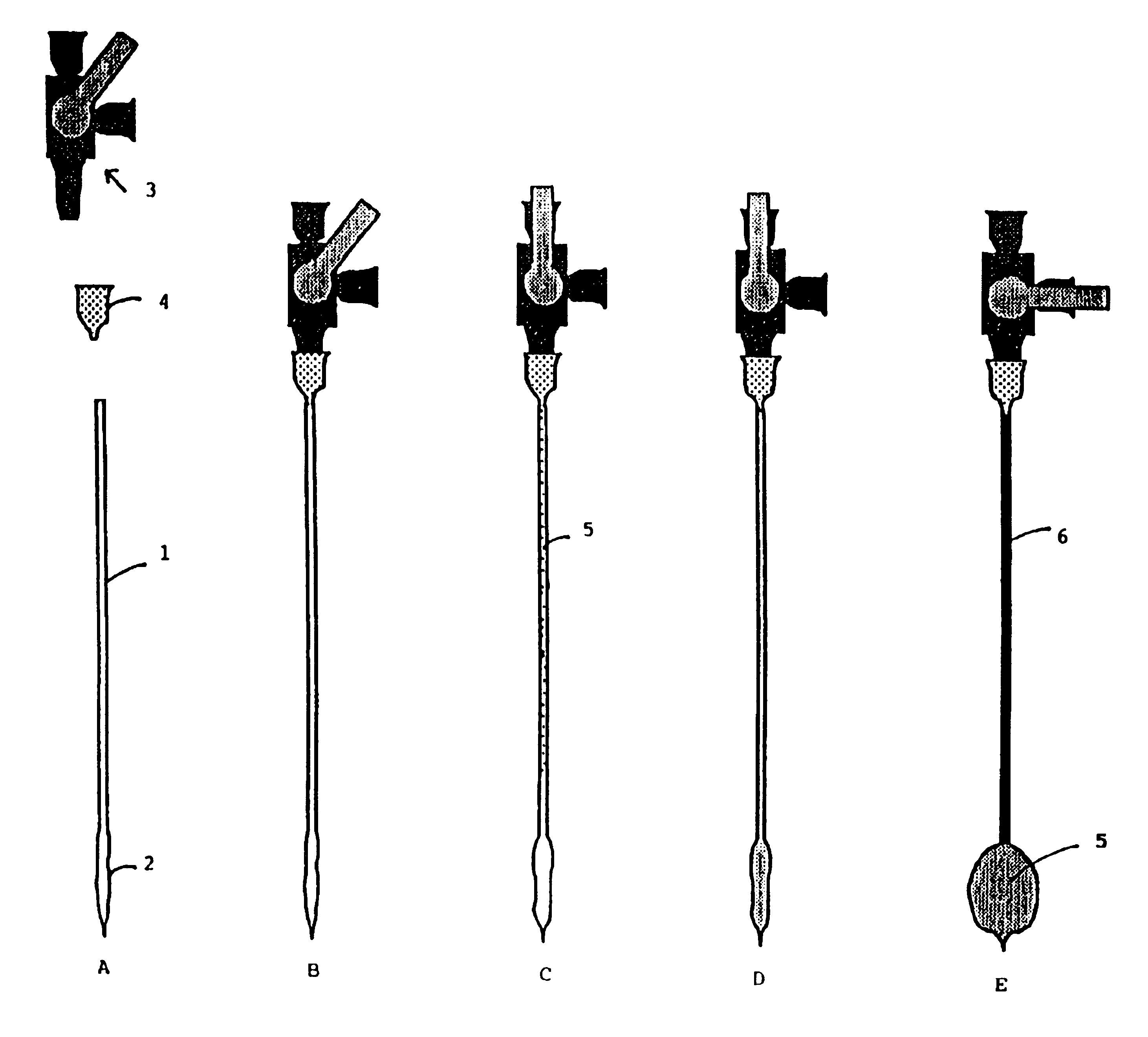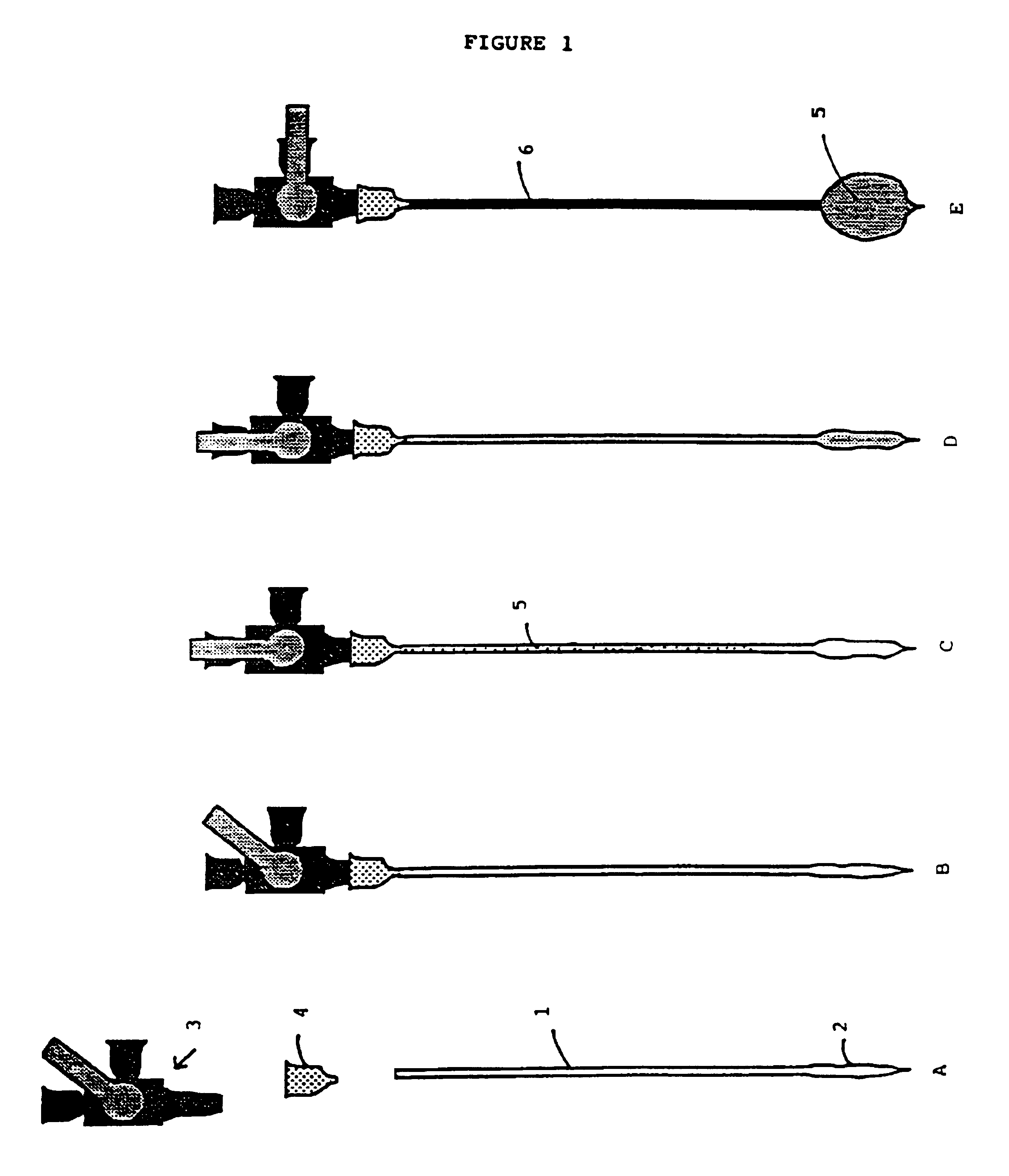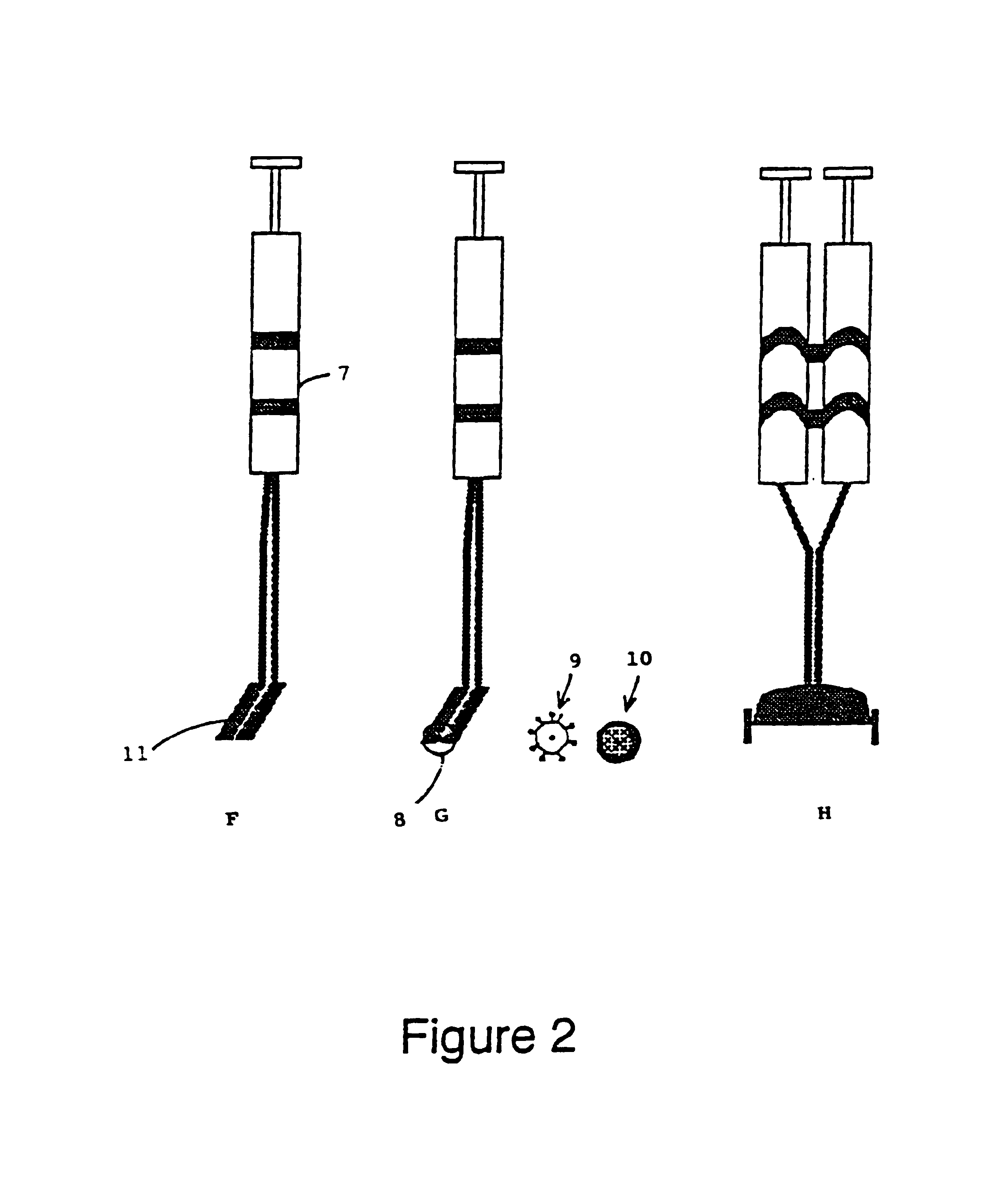Compositions comprising a tissue glue and therapeutic agents
a tissue glue and therapeutic agent technology, applied in the field of medical therapies, can solve the problems of difficult to apply localised therapy over a surface rather than at a single point, and the means for achieving this end are extremely limited, so as to achieve the effect of reducing the exposure of surgeons and operating sta
- Summary
- Abstract
- Description
- Claims
- Application Information
AI Technical Summary
Benefits of technology
Problems solved by technology
Method used
Image
Examples
example
[0076]Add 1.5 ml of 33% NH3 to 4.5 ml of hot dH2O (to make up 7.5% NH4OH) and leave standing in a capped universal tube in the water bath and bring to 60° C.
[0077]Dissolve 1.25 grams of Dextran (MW 10,000) in 2.0 ml of ddH2O then dissolve 225 mg FeCl3.6H2O in the dextran solution. Other macromolecules such as proteins, fibrin, collagen, starch, polylysine, or derivatized dextrans may also be used for the coating. Alternatively, a trivalent lanthanide or Group IIIB chloride may be substituted for 10-50% of the FeCl3. A variety of unstable isotopes of various transition, lanthanide and actinide elements can be introduced at this step as metal chlorides dissolved in water or in an acidic solution of e.g. 0.1M HCl. The amount of trivalent iron may be reduced where trivalent cations are added.
[0078]Dissolve 100 mg FeCl2.4H2O in the Fe3 / dextran solution then place the mixture in a 60° C. water bath for two minutes. Some divalent cations may be added in place of Fe at this step. Some metal...
PUM
| Property | Measurement | Unit |
|---|---|---|
| size | aaaaa | aaaaa |
| surface area | aaaaa | aaaaa |
| diameter | aaaaa | aaaaa |
Abstract
Description
Claims
Application Information
 Login to View More
Login to View More - R&D
- Intellectual Property
- Life Sciences
- Materials
- Tech Scout
- Unparalleled Data Quality
- Higher Quality Content
- 60% Fewer Hallucinations
Browse by: Latest US Patents, China's latest patents, Technical Efficacy Thesaurus, Application Domain, Technology Topic, Popular Technical Reports.
© 2025 PatSnap. All rights reserved.Legal|Privacy policy|Modern Slavery Act Transparency Statement|Sitemap|About US| Contact US: help@patsnap.com



